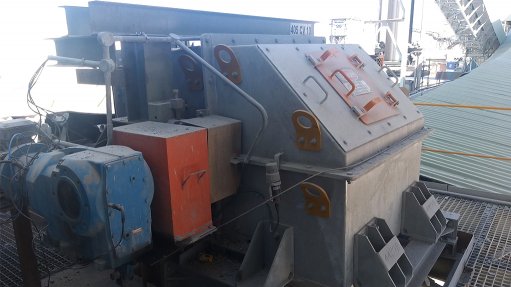
The head section of the feeder to conveyor chute
Operations in a Limpopo platinum mine’s screening house were recently strengthened with the implementation of a relevant and effective transfer point design. The mine had been experiencing difficulties with fines spillage and skew belt loading from two conventional chutes. The chutes transferred fine material of minus 25 mm in size from the screen underpans to the conveyor belts.
Weba Chute Systems resolved the problem by analysing the design problem, implementing structural modifications recommended by its in-house design office, and installing two new custom-designed chutes.
The impact of implementing the new chutes and transfer point design was immediate, with no more skew belt loading and no more spillage, says Weba Chute Systems regional manager Hilton Buys. The belts are now running true and there is no longer any need for additional cleaning around the belts, he says.
“A key aspect of the solution was our cascade chute in a horse-shoe formation,” explains Buys. “Our chute manipulates the material to stay in the centre as it leaves the chute.”
He adds that the chute design considered material characteristics such as lump size, moisture content and bulk density, to ensure that the velocity of the material leaving the chute could be controlled, allowing the material to leave the chute at the same speed that the conveyor is travelling.
“By doing this, we did not need to have skirting as the material is kept in the middle of the belt,” says Buys. “Neither did we need to install impact idlers, as the material was not dropped from a height; rather, there was a gentle transfer from chute to conveyor, which moved at comparable speed.”
Weba Chute warns that an inappropriately designed transfer point can cause costly problems for an entire mining operation, and also have safety implications. In addition to belt damage, valuable production time can be lost through breakdowns and unplanned stoppages, leading to costs far greater than those of a custom-engineered transfer point solution.